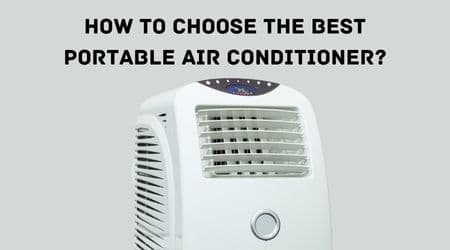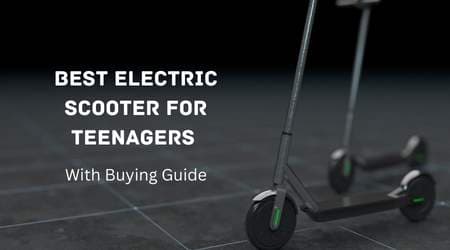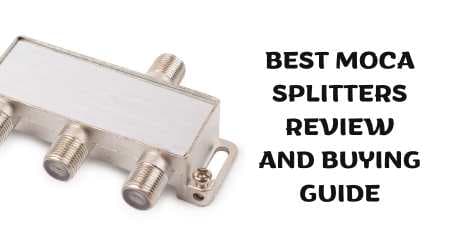
To choose the best portable air conditioner, consider factors such as btu capacity, energy efficiency, noise level, and additional features. A portable air conditioner is a convenient and versatile cooling solution, allowing you to cool specific areas or rooms without the need for installation or ductwork.
By assessing your cooling needs, evaluating product specifications, and reading customer reviews, you can find the perfect portable air conditioner that suits your requirements. Keep scrolling to explore our comprehensive guide on how to choose the best portable air conditioner for your home or office.
Factors To Consider
Choosing the best portable air conditioner requires careful consideration of several factors. These factors will help you determine the right unit for your specific needs and ensure optimal cooling performance. When selecting a portable air conditioner, keep the following factors in mind:
Room Size
The size of the room you want to cool is an essential factor to consider when choosing a portable air conditioner. The cooling capacity of the unit is measured in british thermal units (btus). To ensure efficient cooling, select an air conditioner with a btu rating suitable for the size of your room.
Here's a general guideline:
- Small rooms (up to 200 square feet): Opt for an air conditioner with a btu rating of 5,000-8,000.
- Medium-sized rooms (200-400 square feet): Look for a unit with a btu rating of 8,000-12,000.
- Large rooms (over 400 square feet): Choose an air conditioner with a btu rating of 12,000 or higher.
Keep in mind that factors such as ceiling height, insulation, and sun exposure may also impact the cooling requirements of your space.
Btu Rating
The btu rating of a portable air conditioner determines its cooling power. Higher btu ratings indicate a greater cooling capacity. Consider the following when evaluating btu ratings:
- If the btu rating is too low for your room size, the air conditioner may struggle to cool the space effectively.
- If the btu rating is too high for your room size, the unit may cycle on and off frequently, resulting in inefficient cooling and increased energy consumption.
Ensure you select an air conditioner with an appropriate btu rating to achieve the desired cooling performance and energy efficiency.
Energy Efficiency
Energy efficiency is a crucial factor to consider, as it affects both the environmental impact and operating costs of a portable air conditioner. Look for units with high energy efficiency ratings, indicated by the seasonal energy efficiency ratio (seer) or energy efficiency ratio (eer).
The higher the seer or eer rating, the more energy-efficient the air conditioner.
Consider energy star certified models, as they meet specific efficiency standards set by the environmental protection agency (epa). These units consume less energy, resulting in savings on your energy bills and reduced greenhouse gas emissions.
Noise Level
The noise level of a portable air conditioner can significantly impact your comfort and overall experience. Look for units with lower decibel (db) ratings, as they produce less noise during operation. Consider the following:
- Noise levels below 50 db are generally quiet and suitable for bedrooms, offices, or areas where minimal noise is preferred.
- Cooling capacity may affect noise levels, with higher btu-rated models often producing more noise but providing greater cooling power.
Ensure you find the right balance between cooling performance and noise level to create a comfortable environment.
Portability
The portability of a portable air conditioner offers convenience and flexibility. Consider the following factors related to portability:
- Size and weight: Choose a unit with a compact design and manageable weight, making it easier to move from one room to another.
- Mobility features: Look for air conditioners with built-in casters or wheels for effortless transportation.
- Window installation: Consider whether the unit requires a window installation kit or adjustable window slider for proper venting.
Prioritize portability features that align with your needs, ensuring hassle-free movement and installation of the portable air conditioner.
By considering the room size, btu rating, energy efficiency, noise level, and portability, you'll be well-equipped to select the best portable air conditioner for your cooling needs. Keep these factors in mind to enjoy a comfortable and efficient cooling experience.
Evaluating The Cooling Performance
When it comes to choosing the best portable air conditioner, evaluating its cooling performance is crucial. This section will discuss the key aspects to consider, including airflow and direction, cooling speed, temperature control, and dehumidification. Let's dive in!
Airflow And Direction:
- Adjustable louvers: Look for a portable air conditioner that comes with adjustable louvers. This feature allows you to direct the airflow where you need it the most, providing targeted cooling for specific areas.
- Multiple fan speeds: Opt for a unit that offers multiple fan speeds. This gives you the flexibility to adjust the airflow according to your preference and the room size. Higher fan speeds can cool the room faster, while lower speeds can provide a gentle breeze for more comfort.
Cooling Speed:
- Btu capacity: Check the british thermal unit (btu) capacity of the portable air conditioner. A higher btu rating indicates a greater cooling power. Consider the size of your room and choose a unit with an appropriate btu capacity for efficient cooling.
- Cooling efficiency ratio: Look for the energy efficiency ratio (eer) rating, which indicates the cooling efficiency of the air conditioner. A higher eer rating means better energy efficiency and reduced electricity costs.
Temperature Control:
- Thermostat functionality: Ensure that the portable air conditioner has a built-in thermostat. This feature allows you to set the desired temperature and automatically adjusts the cooling operation to maintain the set temperature.
- Temperature display: Choose a unit with a clear and easy-to-read temperature display. This allows you to monitor the current room temperature and make necessary adjustments as required.
Dehumidification:
- Moisture removal capacity: Consider the dehumidification capability of the portable air conditioner. Look for units that can effectively remove excess moisture from the air, providing a more comfortable environment.
- Drainage options: Check if the unit has a built-in condensate drain or a self-evaporative system. These features help to eliminate the need for manual draining, making maintenance hassle-free.
Evaluating the cooling performance of a portable air conditioner is essential to ensure effective and efficient cooling in your space. Consider factors such as airflow and direction, cooling speed, temperature control, and dehumidification capabilities when making your decision. With the right portable air conditioner, you can enjoy a cool and comfortable environment, even during the hottest days of summer.
Assessing Energy Efficiency
When it comes to choosing the best portable air conditioner, one crucial factor you should consider is energy efficiency. By selecting an energy-efficient unit, you not only help reduce your carbon footprint but also save money on your energy bills.
To make an informed decision, it's essential to understand the key aspects of energy efficiency in portable air conditioners. Let's delve into the three important factors to consider: energy efficiency ratio (eer), seasonal energy efficiency ratio (seer), and energy star rating.
Energy Efficiency Ratio (Eer)
An air conditioner's energy efficiency ratio (eer) signifies its cooling efficiency, especially during peak demand. Here's what you need to know about eer:
- Higher eer ratings indicate better energy efficiency and cooling performance.
- Look for a portable air conditioner with an eer rating of 12 or higher for optimal efficiency.
- The eer calculation is derived by dividing the cooling capacity (btus) by the power input (watts).
- Portable air conditioners with a higher eer rating often have a higher initial cost but can save you money in the long run through lower energy consumption.
Seasonal Energy Efficiency Ratio (Seer)
The seasonal energy efficiency ratio (seer) takes into account the air conditioner's efficiency over a typical cooling season. Consider the following points regarding seer:
- Seer ratings range from 10 to 23, with higher values indicating greater energy efficiency.
- In general, a portable air conditioner with a seer rating of 14 or higher is considered efficient.
- Seer ratings consider various factors like outdoor temperature, humidity, and part-load conditions to provide a more accurate energy efficiency estimate.
- While higher seer ratings may result in a slightly higher initial purchase cost, they typically provide greater long-term energy savings.
Energy Star Rating
The energy star rating is a government-backed certification program that identifies energy-efficient products. Here's what you should know about energy star ratings for portable air conditioners:
- Look for the energy star logo when choosing a portable air conditioner, as it indicates that the unit meets or exceeds energy efficiency standards.
- Energy star-rated portable air conditioners are typically 15% more efficient than conventional models.
- These units incorporate advanced technologies that optimize performance while reducing energy consumption.
- By choosing an energy star-rated portable air conditioner, you have the assurance of both energy efficiency and reliability.
Now that you understand the significance of energy efficiency in portable air conditioners, you can make an informed decision. Consider the eer, seer, and energy star rating when comparing different models. Remember, choosing an energy-efficient portable air conditioner not only benefits your wallet but also contributes to a greener world.
Read Also: Top 10 Best Portable Air Conditioner & Heater Of 2023
Determining The Appropriate Btu Rating
When it comes to choosing the best portable air conditioner, one of the key factors to consider is the btu rating. Btu, or british thermal units, is a measurement of an air conditioner's cooling capacity. Determining the appropriate btu rating for your space is essential to ensure effective cooling.
In this section, we will discuss how to determine the btu rating based on room size and recommended guidelines, as well as how to adjust for insulation and sun exposure.
Room Size And Btu Recommendations
- Room size plays a vital role in determining the btu rating of a portable air conditioner. Consider the following guidelines to match the btu rating with your room size:
- 100 to 200 square feet: Opt for a portable air conditioner with a btu rating between 5,000 and 8,000.
- 200 to 300 square feet: Look for a unit with a btu rating between 8,000 and 10,000.
- 300 to 400 square feet: Choose a portable air conditioner with a btu rating between 10,000 and 12,000.
- 400 to 500 square feet: Go for a unit with a btu rating between 12,000 and 14,000.
- Keep in mind that the larger the room, the higher the btu rating required.
Cooling Capacity Chart
To make things easier, you can refer to a cooling capacity chart to estimate the btu rating based on the size of your room. Here's a general cooling capacity chart to help you determine the appropriate btu rating for your space:
| Room Size (In Square Feet) | Btu Recommendation |
|---|---|
| 100-200 | 5,000-8,000 |
| 200-300 | 8,000-10,000 |
| 300-400 | 10,000-12,000 |
| 400-500 | 12,000-14,000 |
Keep in mind that factors like ceiling height, sun exposure, and insulation may also influence the required btu rating. Let's explore how you can adjust for these variables.
Adjusting For Insulation And Sun Exposure
Insulation and sun exposure can impact the cooling efficiency of a portable air conditioner. Consider the following tips to adjust the btu rating based on these factors:
- If your room is well-insulated and doesn't receive direct sunlight, you can choose a unit with a slightly lower btu rating than recommended.
- In rooms with poor insulation or significant sun exposure, it's advisable to opt for a portable air conditioner with a slightly higher btu rating to compensate for heat gain.
- Additionally, using curtains or blinds to block direct sunlight can help reduce the cooling load and potentially allow for a lower btu rating.
Remember, it is essential to select the right btu rating for your portable air conditioner. By considering factors like room size, insulation, and sun exposure, you can choose the best portable air conditioner to keep your space cool and comfortable throughout the summer months.
Understanding Noise Levels
Portable air conditioners are a convenient and effective way to cool your home or office without the need for complex installation. However, with so many options available on the market, it can be overwhelming to choose the best one for your needs.
One important factor to consider when selecting a portable air conditioner is the noise level it produces. In this section, we will delve into the topic of understanding noise levels, covering decibel ratings and definitions, recommended noise levels for different rooms, and how to interpret noise level specifications.
Decibel Ratings And Definitions
- Decibel ratings are used to measure the intensity of sounds. The higher the decibel rating, the louder the noise.
- Portable air conditioners typically have noise levels ranging from 50 to 70 decibels.
- To put this in perspective, a normal conversation is around 60 decibels, while a vacuum cleaner can reach up to 70 decibels.
Recommended Noise Levels For Different Rooms
- Bedrooms: Since a quiet environment is essential for a good night's sleep, it is recommended to choose a portable air conditioner with a noise level below 50 decibels for bedrooms.
- Living rooms: Since living rooms are often more active and have higher ambient noise levels, portable air conditioners with noise levels around 60 decibels are generally acceptable.
- Offices: In office settings, where concentration is important, it is advised to select a portable air conditioner with noise levels below 60 decibels.
How To Interpret Noise Level Specifications
When looking at noise level specifications for portable air conditioners, it is important to understand that manufacturers often provide two ratings:
- One for the unit itself and one for the maximum noise level when the compressor is running.
- The noise level of the unit itself includes the sound produced by the fan and other components.
- The maximum noise level, which is higher than the base noise level, occurs when the compressor is active.
- It is recommended to consider both ratings when evaluating the noise level of a portable air conditioner.
By considering and understanding the noise levels of portable air conditioners, you can choose the best option for your specific needs and environment. Whether it's for your bedroom, living room, or office, selecting a portable air conditioner with an appropriate noise level will ensure a comfortable and peaceful space without any unnecessary disturbances.
Assessing Portability Features
When it comes to choosing the best portable air conditioner, one of the key factors to consider is its portability features. In this section, we will delve into the important aspects you should assess in order to make an informed decision.
Let's explore the following factors:
Size And Weight:
- The size and weight of a portable air conditioner are crucial to consider as they determine how easy it is to move and transport.
- Look for models that are compact and lightweight, making them effortless to carry from room to room or even between different locations.
- Ensure that the dimensions of the unit fit well within the space you have available.
Wheels And Handles:
- Wheels and handles significantly enhance the maneuverability of a portable air conditioner.
- Opt for units that feature smooth-rolling wheels, as they allow you to effortlessly transport the air conditioner across various surfaces.
- Handles are also beneficial, providing a comfortable grip when moving the unit and making it easier to navigate through narrow doorways or up and down stairs.
Installation And Setup:
- Consider the ease of installation and setup when selecting a portable air conditioner.
- Look for models that offer a hassle-free installation process, with clear instructions and minimal requirements.
- Some units may require professional installation, whereas others can be set up by the user without the need for additional tools or expertise.
Venting Options:
- Venting is a crucial aspect of portable air conditioners, as it helps to expel hot air and maintain a comfortable indoor temperature.
- Check the different venting options provided by the various models.
- Some portable air conditioners require a window or a dedicated venting hole for the hot air to be discharged outside, while others can use a drop ceiling or sliding door for venting.
- Ensure that the venting options align with your specific needs and the layout of your space.
When assessing the portability features of a portable air conditioner, it is important to consider its size and weight, the presence of wheels and handles, the ease of installation and setup, as well as the available venting options. By carefully evaluating these factors, you can choose a portable air conditioner that meets your requirements and provides efficient cooling wherever you need it.
Considering Additional Features
Remote Control
A portable air conditioner with a remote control can offer you convenience and ease of use. You don't have to get up from your seat or bed every time you want to adjust the settings. With just a click of a button, you can control the temperature, fan speed, and mode from across the room.
It's like having a personal assistant for your cooling needs.
Here are some benefits of having a remote control for your portable air conditioner:
- Temperature control: Easily increase or decrease the temperature to create a comfortable indoor environment without having to manually adjust the unit.
- Fan speed adjustment: Change the fan speed according to your preference to ensure optimal airflow and cooling efficiency.
- Mode selection: Switch between cooling, dehumidifying, and fan-only modes with a simple press of a button.
- Timer setting: Set a timer to turn the portable air conditioner on or off at specific times, allowing you to conserve energy and save money on utility bills.
Programmable Timer
A programmable timer feature is a valuable addition to any portable air conditioner. This feature allows you to set specific times for your unit to turn on or off automatically. Here's why it's worth considering:
- Energy efficiency: By programming your portable air conditioner to turn on shortly before you arrive home or wake up, you can ensure that your space is comfortably cool while minimizing energy consumption.
- Convenience: Avoid the hassle of manually turning the unit on and off by scheduling it to operate according to your daily routine.
- Customization: Set different schedules for weekdays and weekends to accommodate your specific needs and lifestyle.
- Quiet and undisturbed sleep: With a programmable timer, you can have the air conditioner turn off or operate in a quieter mode when you're ready for bed, promoting a more restful sleep environment.
Sleep Mode
Sleep mode is a vital feature to consider if you want a peaceful and comfortable night's sleep without any interruptions from your portable air conditioner. Here's why it matters:
- Noise reduction: Portable air conditioners equipped with sleep mode operate at a quieter noise level, ensuring minimal disturbance during your sleep.
- Temperature adjustment: The unit automatically adjusts the temperature to maintain a comfortable sleeping environment without the need for manual intervention.
- Energy efficiency: Sleep mode helps conserve energy by gradually adjusting the cooling settings, preventing excessive energy consumption while you sleep.
- Optimal comfort: Enjoy consistent cooling throughout the night without feeling too cold or too warm, thanks to the intelligent temperature control of sleep mode.
Air Quality Enhancements
Choosing a portable air conditioner with air quality enhancements can greatly improve the overall comfort and freshness of your indoor space. Consider the following features:
- Filter systems: Look for portable air conditioners that incorporate advanced filtration systems, such as hepa or activated carbon filters, to remove dust, allergens, and odors from the air.
- Dehumidification: Some portable air conditioners offer dehumidification capabilities, reducing excess moisture in the air and helping to prevent mold and mildew growth.
- Ionizers: Ionizing features release negative ions into the air, which can help to purify the environment by neutralizing particles like dust and pollen.
- Air circulation: Units with oscillating louvers or multiple cooling directions ensure even air distribution throughout the room, improving overall air quality and comfort.
When choosing the best portable air conditioner, considering additional features such as a remote control, programmable timer, sleep mode, and air quality enhancements can greatly enhance your cooling experience. With these features, you'll enjoy convenience, energy efficiency, improved sleep quality, and fresher indoor air.
Make sure to prioritize the features that align with your specific needs and preferences for an optimal cooling solution.
Comparing Brands And Models
Researching Reliable Brands:
When it comes to finding the best portable air conditioner, researching reliable brands is an essential step. Here are some ways you can identify trustworthy brands before making a purchase:
- Look for well-established brands with a solid reputation in the market.
- Check if the brand has been in the industry for a significant period.
- Consider brands that are known for their quality and durability.
- Look for brands that specialize in air conditioning products and have a history of producing reliable and efficient units.
Checking User Reviews And Ratings:
To make an informed decision, it's important to check user reviews and ratings of different portable air conditioner models. Here's why this step is crucial:
- User reviews provide real-life experiences and insights that can help you understand the pros and cons of a particular model.
- Ratings give you an overall idea of customer satisfaction and the product's performance.
- Look for patterns in reviews and consider both positive and negative feedback.
- Choose models with a significant number of positive reviews and high ratings, as they are more likely to meet your expectations.
Comparing Features And Specifications:
When comparing portable air conditioner models, it's important to consider their features and specifications. Here are the key factors to look for:
- Cooling capacity: Check the btu (british thermal unit) rating to ensure it matches your room size.
- Energy efficiency: Look for energy-efficient models with high seer (seasonal energy efficiency ratio) ratings to save on energy costs.
- Noise level: Consider models with lower decibel ratings if noise is a concern for you.
- Portability: Evaluate the weight and dimensions of the unit, as well as the availability of handles and wheels for easy transportation.
- Additional features: Consider features like programmable timers, remote control, adjustable fan speeds, and air purifying capabilities based on your preferences and needs.
By conducting thorough research, checking user reviews and ratings, and comparing features and specifications, you'll be well-equipped to choose the best portable air conditioner that meets your requirements.
Read Also: How Do Portable Air Conditioner Works
Setting A Budget
Determining Your Price Range
When it comes to choosing the best portable air conditioner for your needs, one of the first things you'll want to consider is your budget. Setting a budget can help you narrow down your options and ensure that you don't overspend.
Here's how you can determine your price range:
- Assess your financial situation: Take a look at your current income and expenses to determine how much you can comfortably afford to spend on a portable air conditioner. Consider any other upcoming expenses or financial commitments that you need to account for.
- Research the market: Get an understanding of the price range for portable air conditioners by doing some research. Look at different brands, models, and features to get an idea of the price points available. This will help you set realistic expectations for your budget.
- Prioritize your needs: Consider the specific features and functions that are essential for your desired portable air conditioner. Determine which features are non-negotiable and which ones you can potentially compromise on if it means staying within your budget.
- Evaluate long-term costs: Keep in mind that the initial purchase price is not the only cost associated with a portable air conditioner. Consider factors such as energy efficiency, maintenance requirements, and potential repair costs when setting your budget. Investing in a more energy-efficient model may save you money on your utility bills over time.
Weighing Features And Cost Trade-Offs
Once you have established your price range, it is crucial to understand how features and costs trade-off. Here are some key points to keep in mind:
- Determine your must-have features: Identify the features that are essential for your needs, such as cooling capacity, noise level, programmable settings, and portability. Make a list of these must-have features to ensure you don't compromise on functionality.
- Understand cost implications: Certain features may significantly impact the price of a portable air conditioner. For example, models with higher cooling capacities or advanced filtration systems may come at a higher cost. Consider whether these premium features are worth the additional expense to you.
- Prioritize value for money: Look for portable air conditioner models that offer the best combination of necessary features, quality construction, and affordability within your budget. Consider reading customer reviews and expert opinions to get a better understanding of the value offered by different brands and models.
- Be open to trade-offs: In some cases, you may need to make trade-offs to stay within your budget. Evaluate the importance of each feature and consider compromising on less critical ones if it means finding a portable air conditioner that fits your budget and meets your basic requirements.
Setting a budget and understanding the trade-offs between features and cost are essential steps in choosing the best portable air conditioner for your needs. By following these guidelines, you can make an informed decision that aligns with your financial situation without sacrificing on the functionality and performance of the unit.
Frequently Asked Questions On How To Choose The Best Portable Air Conditioner
What Are The Important Factors To Consider When Choosing A Portable Air Conditioner?
When choosing a portable air conditioner, it's vital to consider the cooling capacity, energy efficiency, noise level, portability, and additional features like dehumidification or remote control.
How Do I Determine The Cooling Capacity I Need For A Portable Air Conditioner?
To determine the cooling capacity needed for a portable air conditioner, measure the room's square footage and use a btu (british thermal unit) chart as a guide. Generally, a unit with 7,000 btu can cool a 250 square feet room, but factors like insulation and sunlight exposure should also be considered.
Are Portable Air Conditioners Energy-Efficient?
Portable air conditioners come with an energy efficiency ratio (eer) rating. Look for units with a higher eer, as they are more energy-efficient. Additionally, choose models with energy-saving features like programmable timers and sleep modes to conserve energy and reduce utility costs.
Conclusion
To choose the best portable air conditioner, consider your specific needs, room size, energy efficiency, noise level, and additional features. By carefully evaluating these factors, you can ensure that your portable air conditioner performs optimally and efficiently. First, determine the size of the room you need to cool and choose an ac unit with an appropriate cooling capacity for that space.
Additionally, look for energy-efficient models that have an energy star certification to save on electricity bills. Noise level is also an essential consideration, especially if you plan to use the air conditioner in your bedroom or study. Look for ac units with adjustable fan speeds and sleep modes for quieter operation.
Lastly, consider any additional features that would enhance your comfort, such as programmable timers, remote controls, or auto shut-off functions. By taking these factors into account, you can confidently select the best portable air conditioner for your needs, ensuring a comfortable and cool environment throughout the summer season.





